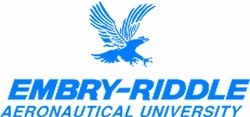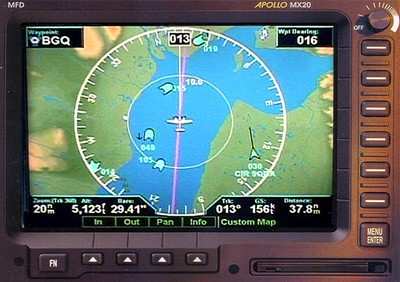New Tools Key To Better Air Traffic Control, Reduced Fuel
Use
 Embry-Riddle Aeronautical University
announced this week it will demonstrate to the Federal Aviation
Administration (FAA) its progress in developing air traffic control
tools capable of reducing weather-related flight delays, reducing
aircraft fuel consumption, and improving the efficiency of flight
operations.
Embry-Riddle Aeronautical University
announced this week it will demonstrate to the Federal Aviation
Administration (FAA) its progress in developing air traffic control
tools capable of reducing weather-related flight delays, reducing
aircraft fuel consumption, and improving the efficiency of flight
operations.
Along with research partners Lockheed Martin, Computer Sciences
Corp., Boeing, ENSCO, and Mosaic ATM, the demonstration will show
how current and forecasted weather information can be successfully
integrated into the FAA’s traffic management and en route
automation systems, located in FAA centers and major airports
around the country.
The demonstration, to be held at Embry-Riddle’s NextGen
testing facility at Daytona Beach International Airport on November
18, will highlight what could be a cornerstone system enhancement
and critical next step in the FAA’s Next Generation Air
Transportation System needed to safely accommodate the growing
number of US air travelers, estimated to hit one billion by
2016.
"The key to realizing the benefits of NextGen is to have all
systems talking to one another and integrated under a systemwide
information management system," said Dr. Christina
Frederick-Recascino, Embry-Riddle’s vice president for
research. "This demonstration will show the FAA that this
particular integration is feasible, practical, and beneficial."
ERAU says the demonstration will show the FAA how integrating
weather with traffic information throughout the national airspace
system will allow controllers to reroute aircraft efficiently and
quickly around thunderstorms and other forecasted severe
weather.
New weather forecast products will be transmitted to the
computers of D-position controllers, enabling the controllers to
probe flights to identify weather incursions. The D-position
controllers can then use a new rerouting capability to
point-and-click aircraft around the predicted severe weather to
generate new flight plans and efficiently schedule aircraft at
their arrival destinations.
By sharing information throughout the national airspace and
giving controllers the ability to reroute air traffic smoothly long
before it reaches bad weather, the new system will result in fewer
disruptions and delays in the air and at airports. Travelers will
have shorter waits, and jetliners will burn less fuel.

Embry-Riddle and its partners are conducting NextGen research in
three phases:
- Phase 1 (2008 and 2009) – Integration of 4-D weather and
flight trajectory display systems on controllers’ computers,
allowing them to better manage flights around current and
forecasted severe weather.
- Phase 2 (2009 and 2010) – Possible focus on integration
of airport surface monitoring and departure and arrival management
systems into a systemwide information management (SWIM)
system.
- Phase 3 (2010 and 2011) – Possible focus on integration
of a 300 percent increase in air traffic, using continuous ascent
and descent procedures that are smoother, quieter, cleaner, and
more fuel-efficient than current "step-up" and "step-down"
methods.
Embry-Riddle is working with the NextGen program office to test
new technologies and enhance existing ones to advance the
FAA’s NextGen vision by giving leading industry and research
partners the ability to model these capabilities in a real airport
environment – such as the Daytona Beach testing facility.
Program participants also include Barco, Frequentis, Harris Corp.,
Jeppesen, Sensis, Transtech, and the Volpe Center.
 ANN's Daily Aero-Term (06.30.25): Ground Stop (GS)
ANN's Daily Aero-Term (06.30.25): Ground Stop (GS) ANN's Daily Aero-Linx (06.30.25)
ANN's Daily Aero-Linx (06.30.25) Aero-News: Quote of the Day (06.30.25)
Aero-News: Quote of the Day (06.30.25) NTSB Final Report: ICON A5
NTSB Final Report: ICON A5 Airborne Affordable Flyers 06.26.25: PA18 Upgrades, Delta Force, Rhinebeck
Airborne Affordable Flyers 06.26.25: PA18 Upgrades, Delta Force, Rhinebeck




